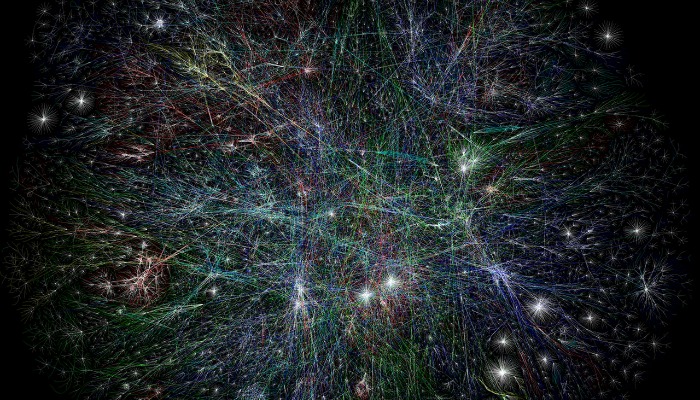
There is something strange going on in Utah. The State finds itself on two different top-ten lists that you may have seen or heard about. According to the latest Gallup poll, Utah is one of the 10 happiest states in the country. This is a greatly reassuring statistic to hear if you happen to live in the Beehive State. However there is another top 10 list Utah places on that is a little more alarming — suicide (heatmap of US).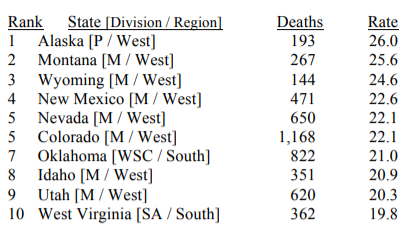
According to the Center for Disease Control (CDC), the specific demographic most at risk of suicide nationwide are teenagers. It is the 2nd leading cause of death for anyone between the ages of 10 and 20, the first being accidents. And according to a CDC investigation in Utah, there has been a “141.3% increase in suicides among Utah youth aged 10-17 from 2011 to 2015, compared to an increase of 23.5% nationally (UDOH).” This statistic is beyond alarming.
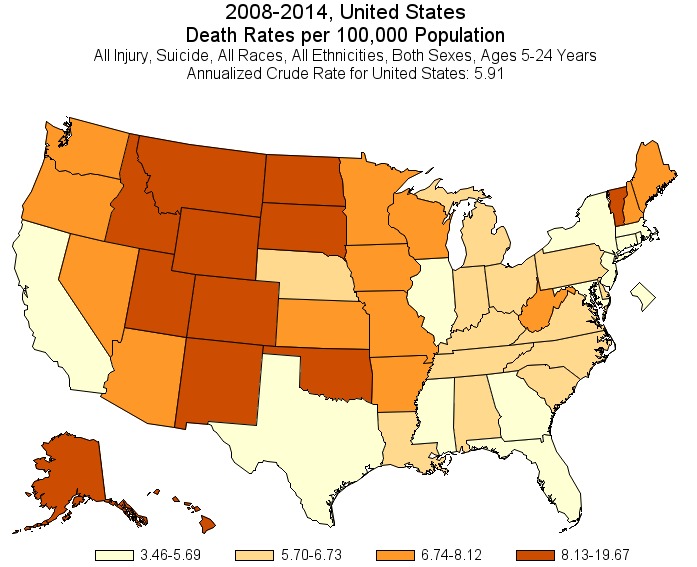 When I look at these numbers, I am deeply disturbed. And I feel like, in public conversation about depression and suicide, we often lose sight of the reality that these numbers represent real children who were once alive, but are now dead. These numbers represent families struggling to know how to move forward and communities in grief.
When I look at these numbers, I am deeply disturbed. And I feel like, in public conversation about depression and suicide, we often lose sight of the reality that these numbers represent real children who were once alive, but are now dead. These numbers represent families struggling to know how to move forward and communities in grief.
So in our discussion of this sensitive issue, let’s not lose sight of this one absolute reality — real teenagers with real hopes and dreams, with real families, neighbors, and friends — are dying by their own hands at an alarming rate within the State of Utah.
What I hope to do in this article is take an issue normally discussed in a 2-dimensional fashion and make it 3-dimensional. We like to create strawmen villains to pin the blame on. Oversimplifying an issue is a good way to create sensational headlines, but a terrible way to create helpful and constructive dialogue. Depression and suicide in Utah are often blamed on one or two things, but I want to show that there might be a lot more going on. This can help us have a better conversation about how to begin healing the issue.
The Brain and Complexity
Science has known that depression and suicide are complex and holistic issues for a long time now. And by holistic I mean that there is a network of contributing factors that all play together to manifest as depression. Previously depression had been seen as a chemical imbalance in the brain. However, in The American Journal of Psychiatry, Kenneth Kendler said,
We have hunted for big, simple neuropathological explanations for psychiatric disorders and have not found them. We have hunted for big, simple neurochemical explanations for psychiatric disorders and have not found them. We have hunted for big, simple genetic explanations for psychiatric disorders and have not found them.
It is only recently that our cultural dialogue is catching up because of the work of researchers like Dr. Kendler and writers like Robert Whitaker, author of Mad in America.
The featured image of this article is a map of the internet. It is a visual representation of the networking data actively occurring. The image below is an image of the neural pathways in the brain. Look familiar? It should. Scientists have called the brain the most complex object in the universe. As such, any conversation we have about mental health including, suicide and depression, needs to honor that complexity.
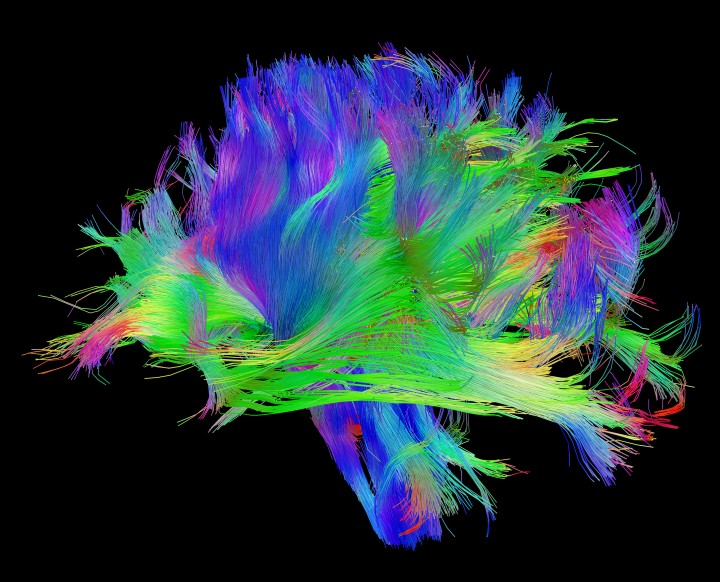
What all this means is that simple answers aren’t helpful because they aren’t honest. High and increasing rates of teenage suicide in Utah cannot possibly be entirely the fault of the Mormon Church. It would be like blaming one square foot of water for an entire flood. Depression and suicide are the net effects of many interrelated factors. So let’s go through some of those factors and lay a solid foundation so a productive conversation can be had.
Cascades of Correlating Causes
First a note about correlation and causation. Determining what is a definite cause and what is simply a correlation is hard to do. Many of these factors listed below might be only correlative and some might be definite contributing causes. But the most important thing to remember is that these factors are like ripples in a pool reflecting, refracting, interacting off each other.
Also, I have tried to find as many sources on these as possible, but it became pretty grating over time to constantly query Google for the many-faceted factors of depression. So forgive me if not everything is sourced. And this is not meant to be a comprehensive inventory of all the contributing factors. This is not a book after all.
Social
Social contributors are facets of our society that we live in. Some of the biggest risk factors for depression in our society are violence in the form of bullying, abuse, war, etc. We also should keep our eyes on the factors that might impact teenagers at a higher rate than adults. So bullying (social and cyber) and abuse of all kinds are notable. Social media is another factor that almost goes without saying. It is has been consistently linked with depression.
One thing particular to Utah is the subtle perfectionistic culture. As a teenager who grew up in Utah, I felt like I wasn’t good enough a lot. And I know some of my adult mental neuroses are traceable back to those years spent shaming and heaping loads unnecessary guilt on myself because I was a flawed human.
Some of the uglier realities of our society that might not be as ubiquitous in their reach are racism, sexism, and homophobia. Those that have been marginalized by society, as I’ve said above, are at an increased risk for depression and suicide. And this same thing goes for anyone that is on the receiving end of cultural shaming and stigmatization. Unlike some other faiths, Mormonism has no institutionalized shunning. Shame and stigma are often self-inflicted, or socially inflicted, because of high standards and a misunderstanding of God’s compassion vs judgment.
There have also been researched findings which suggest that the frontier self-reliant mindset common in the Mountain West, where suicide rates are unusually high, is impacting suicide rates.
The general takeaway from these social causes is that we live in a society where we can treat each other in ugly ways. It should be our task then, to be more gentle in the way we interact with our friends and neighbors. Everyone has something hard going on in their lives. It is never a bad idea to lead with compassion when we approach one another.
Psychological
These factors are those that reside within the confines of our own mind. How do we talk to ourselves in our heads? Is it with force and disdain? Are we prone to self-destructive thought processes that spiral into hopeless despair? I know this happens to me. I am a master at spiraling into the existential abyss.
How do we perceive our own behavior? We all have unhealthy habits that we use to cope with the stress of life. But in what light do we cast those habits? If it is a pornography habit, do you hate yourself for it? Do you perceive your mind to be forever diseased or addicted? A study coming from BYU shows that simply perceiving our behavior in a certain way can induce problematic anxiety and relational problems. This same effect can result from any of our habits, mental or behavioral.
While there are many more psychological factors, I’m trying to be short. The takeaway is to underscore the importance of other people. When we get trapped in our own minds, it is important we listen to the voices of those who love us. I know this one is particularly tough, but I know that being in my own head I am too close to the trees to see the forest. By talking with others, especially a therapist, I can learn new ideas and see that I might have unhealthy mental pathways I’m not even aware of. I know that seeing a therapist was one of the best things I did. There should be no shame around therapy. Everyone should do it, even if you aren’t depressed.
As well, meditation is, across the board, one of the best things you could do for your mind. It has a phenomenal impact on depression and anxiety and is the rising tide that floats all boats. If you suffer from depressive episodes, maybe begin a meditation practice.
Medical
This one’s a bit of a head-scratcher. But also glaringly obvious enough that we rarely consider it — a lot of the prescriptions we take for non-depression related health issues list anxiety, depression, or suicidal ideation as a side effect. Here is a pretty good list of common drugs that list depression as a side effect. Or, better yet, if you have any prescriptions lying around, read through the side effects.

The other side to this coin is that the very drugs we take when we’re depressed have the side effect of increasing our depression or suicidal thoughts. If you have an antidepressant, look at the black box label. And these side effects happen to be more pronounced in teenagers with developing minds. There is even an argument to be made that Americans are overprescribed with antidepressants.
If we want to have a productive conversation about teenage suicide, we need to keep everything on the table — including antidepressants as both a potential solution and a potential cause.
The takeaway from this is not to stop taking our prescriptions. This is especially true for antidepressants as hard withdrawals can be dangerous. But we do need to be aware of all the various things that might be impacting our state of mind. Perhaps there are alternative drugs or treatments that have more minimal side effects. It is important that we medicate ourselves with wisdom and fully informed consent.
Environmental
Environmental causes are those factors which are aspects of the places we live our lives or the things we eat.
 Of notable concern is the depressive effect of air pollution on a population. In fact, this study suggests that long-term exposure to air pollution might increase the odds of taking an antidepressant. One of the worst parts of living in Utah is the air pollution along the Wasatch Front. It is consistently (but intermittently) some of the worst air in the nation to breathe during the winter time.
Of notable concern is the depressive effect of air pollution on a population. In fact, this study suggests that long-term exposure to air pollution might increase the odds of taking an antidepressant. One of the worst parts of living in Utah is the air pollution along the Wasatch Front. It is consistently (but intermittently) some of the worst air in the nation to breathe during the winter time.
More recently there was a study that linked high altitude and thin air with depression in female rats, which suggests that a similar linkage could be found in humans.
Something that we don’t think of is noise pollution. Our ears are always listening, even when we’re sleeping. All sound the ear collects is dumped into the brain which then has to decide if it’s important enough to bring attention to. We live in very noisy societies and rarely, if ever, experience natural silence. Whether it’s the TV, our music, or the street we live on, noise pollution is associated with anxiety and depression.
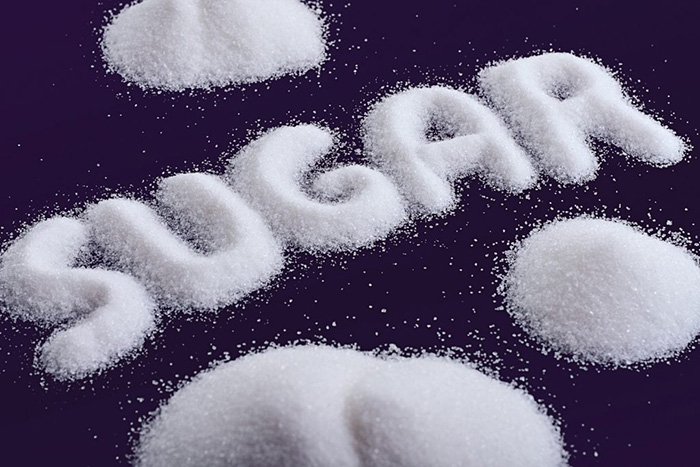
Also, there are mountains of science behind the relationship between our diet and our mental state. You are what you eat and poor nutrition has consistently been linked to depression and anxiety. It has been found that the Western or American dietary pattern is associated with increased risk of depression. Diets high in processed meats, refined grains, sugar, and dairy, with low intakes of fruits and veggies, increase the risk of depression.
As a society, we have also never been so removed from nature. The book The Last Child in the Woods termed it Nature Deficit Disorder. We spend all day indoors that we don’t get enough sun, which by my own experience in the Pacific Northwest, is a real depressive factor. Utah is rich in outdoor activities, but the State’s population is notably low in Vitamin D. As humans, we need fresh air, sunlight, trees, mountains, grand views, dirt between our toes, and the wild. Ecotherapy, or even recreational therapy, is a therapy based in nature — in getting outside and it has amazing results.
The takeaway here is to be more conscious of our surroundings. Start a garden or plant some herbs. Instead of scrolling through your phone during your break, take a step outside and look at the clouds. Be more mindful of the effects certain foods have on your mind. Have a bad episode one night? What did you eat that day? Make a food diary of foods that make you feel good and foods that don’t. Cultivate your own environment and surround yourself with things that make you feel whole and good.
Religion and Spirituality
This is an odd one. Religion and spirituality are supposed to be the balm that soothes an aching soul. But from my own experience I know it can be a double-edged sword. With the same stroke that heals us, it can wound us deeply. And if there are unusually high rates of depression and suicide in Utah, then it would be irresponsible not to talk about the effect of religion on our mental states. Like many of the factors above, like food, society, or medicine, religion can also be an antidepressant and do much to heal us. It all depends on the type of relationship we have with food, society, medicine, or religion.
Do you believe in a kind, compassionate, and forgiving God? Or do you believe in an authoritative, angry, and retributive God? Belief in the latter is associated with depression and lower quality of life. This study found that whether or not religion helped or hurt your mental state vary in large part on how you perceive it or relate to it.
Do we perform our religion or is it something we live into? Do we constantly ask if we’re measuring up? Is our place in heaven something to be earned? Do you place more importance on obedience and sin then love and forgiveness? Chances are you might have an unhealthy relationship with your religion and it could be negatively impacting your mental state.
Mormons and the LGBT Community
A lot has been said in the last few years on The Church of Jesus Christ of Latter-day Saints’ LGBTQ+ policy’s effect on youth suicide rates in Utah. Some think it is the underlying issue and other’s think it is a non-issue. What is certain is that the CDC report, mentioned above, states specifically that LGBTQ+ teens are 42% more at risk of suicide nationwide. So it isn’t hard to imagine that this same statistic exists in Utah. However, for one reason or another, Utah doesn’t collect sexual orientation data for teenagers. Meaning that we have no data on how many LGBTQ+ teens in Utah commit suicide.
I feel I need to point something out: absence of evidence is not evidence of absence. Just because we don’t have the data doesn’t mean that data doesn’t exist. Mormonism’s cultural treatment of LGBTQ+ individuals could be the biggest factor in teenage suicide, but it could also be the smallest factor. The reality is we don’t know. And because we don’t know, it’s better to err on the side of caution and treat those marginalized by society with love and acceptance, regardless of how we feel about their lifestyle.
This is why we need to consider the Church’s impact on this. Like I said above, the Church can’t be blamed entirely, but it is a part of Utah and needs to be kept on the table so we can figure out why teenagers in this state feel the need to kill themselves. To give them a free pass just because they’re the Church would be irresponsible.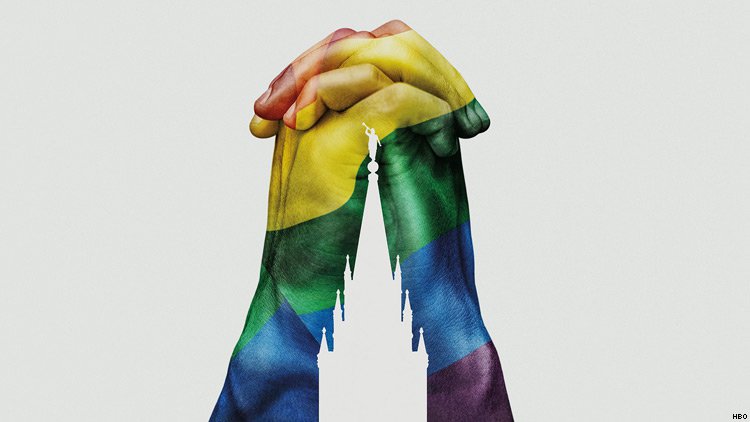
When Jesus told the Twelve that one of them would betray Him, they didn’t point their fingers at Judas. They asked, “Lord, is it I?” As an institution and as individual members we need to look ourselves in the mirror and ask ourselves what role we might be playing in this statewide epidemic. I’ve written before that the most important thing for the Church to change is culture.
The takeaway from this section, I hope, is that nothing gets a pass. When it comes to saving the lives of Utah’s youth, all things need to be on the table. However, this is not to discount that religion and spirituality are largely shields against depression and anxiety. Because they are. The burden of Christ is easy and light. But if the Gospel is heavy, wearisome, and psychologically wounding, then maybe we need to reexamine our approach to it.
Complexity Means Hope
To me, complexity and nuance in the conversation of depression mean hope. If there are many small contributing factors to my depression then it doesn’t seem as insurmountable a task to begin doing small things to relieve the burden. The biggest mountains in the world are climbed by humans taking little steps. This complexity shows that each individual path in and out of depression will be uniquely crafted to an individual. If medication isn’t working for you, then you still have a hope of finding the right combination of other options. Or if medication is only-kind-of working for you, then there are other things that you can try to get to where you want to be. I do not believe that depression is a lifelong sentence. And I know there are scientists who will back me up on that. Lifelong healing is possible.
Links to Hope:
Suicide Prevention Hotline: always open and always a helpful voice in times of crisis.
The Trevor Project: Crisis Intervention for LGBTQ youth.
Encircle: LGBTQ youth and family resource center.
All of Life: Pursuing sustainable healing from mental/emotional distress.





